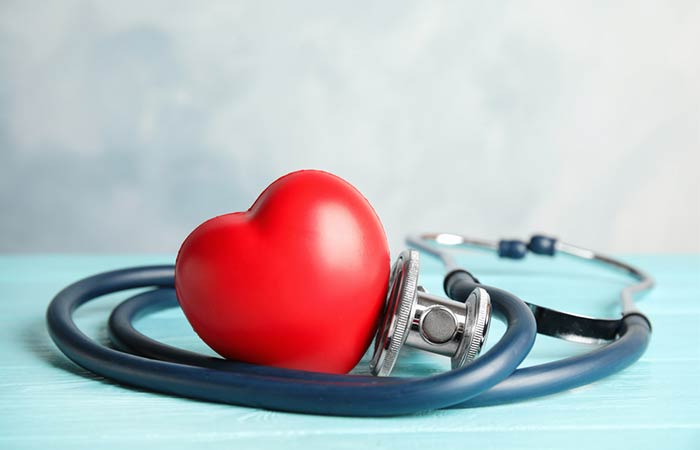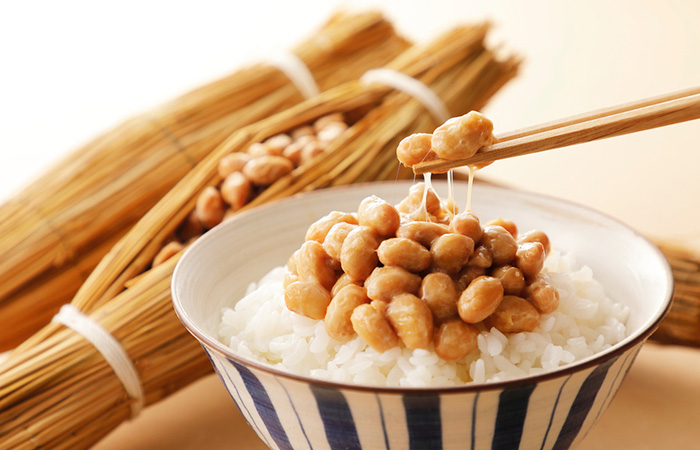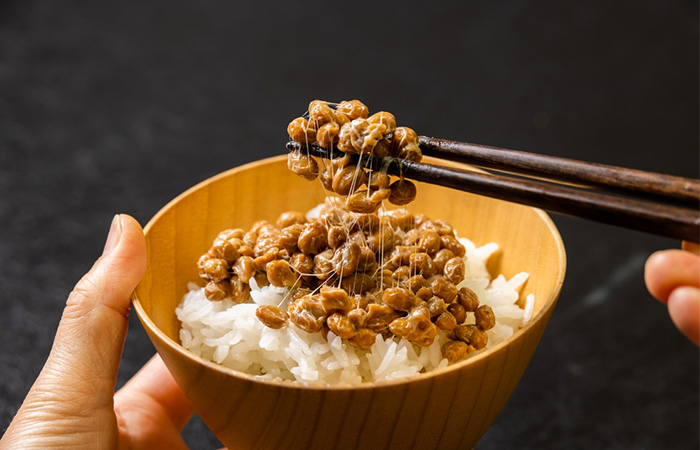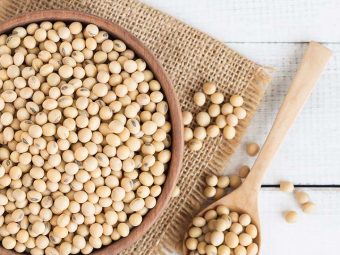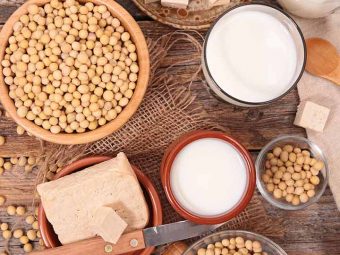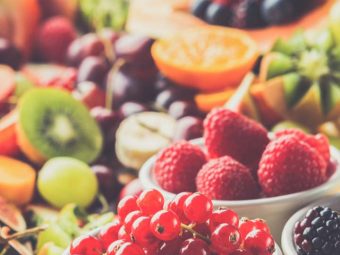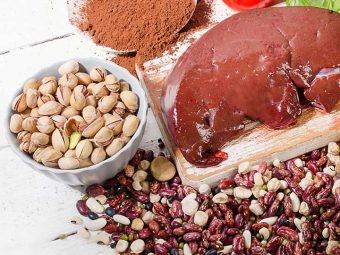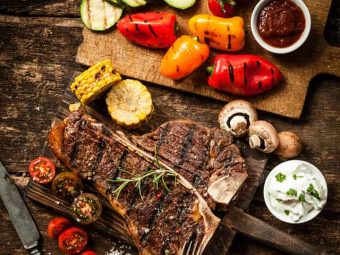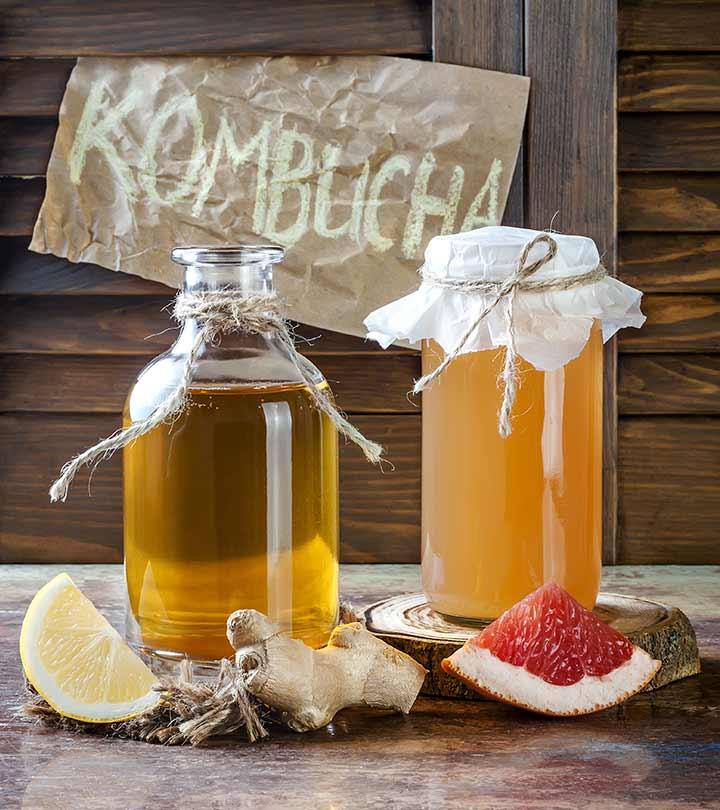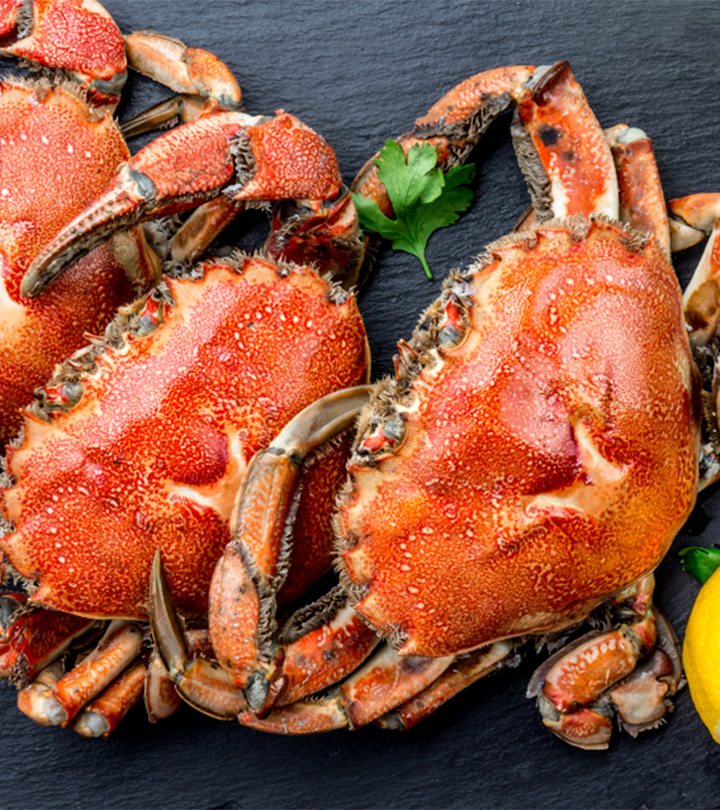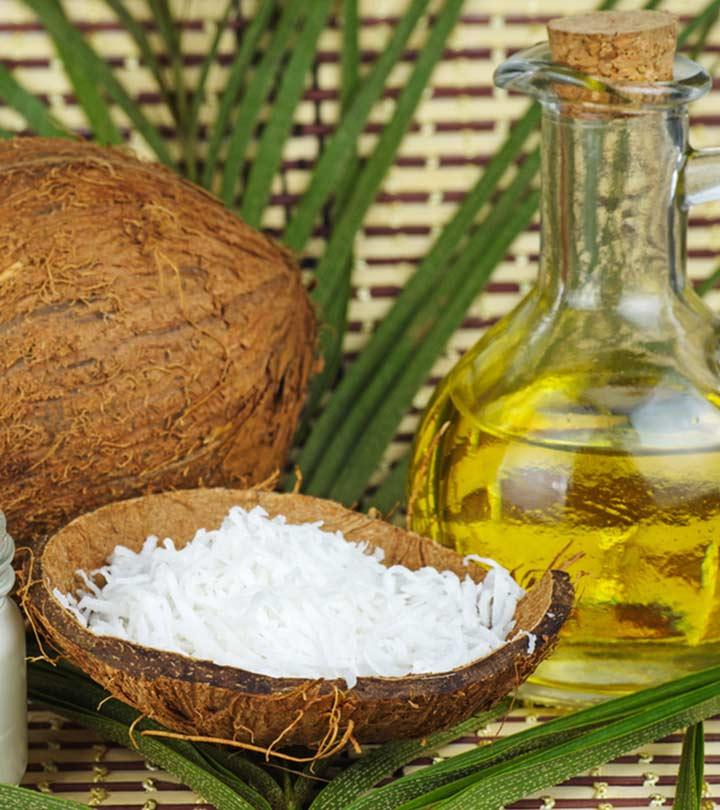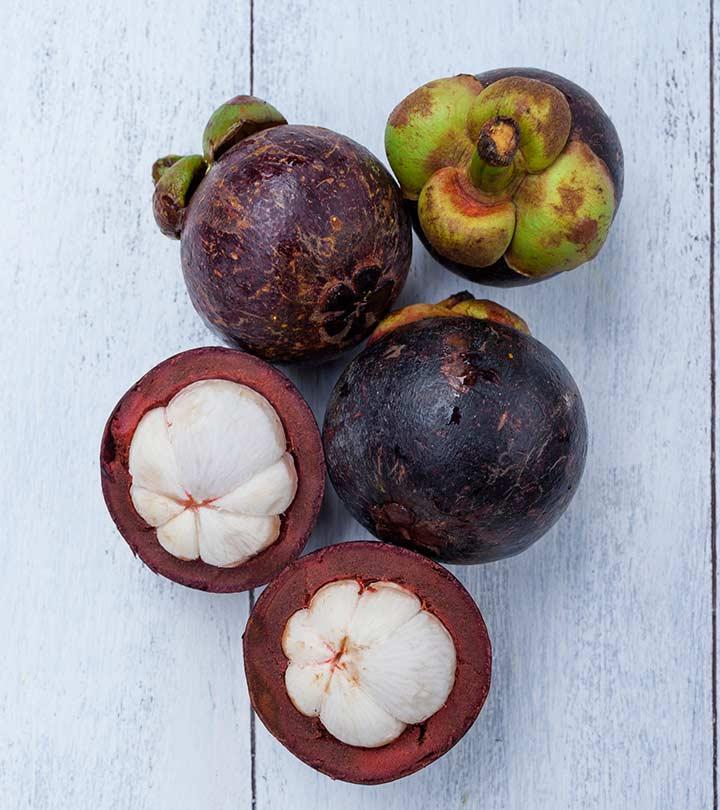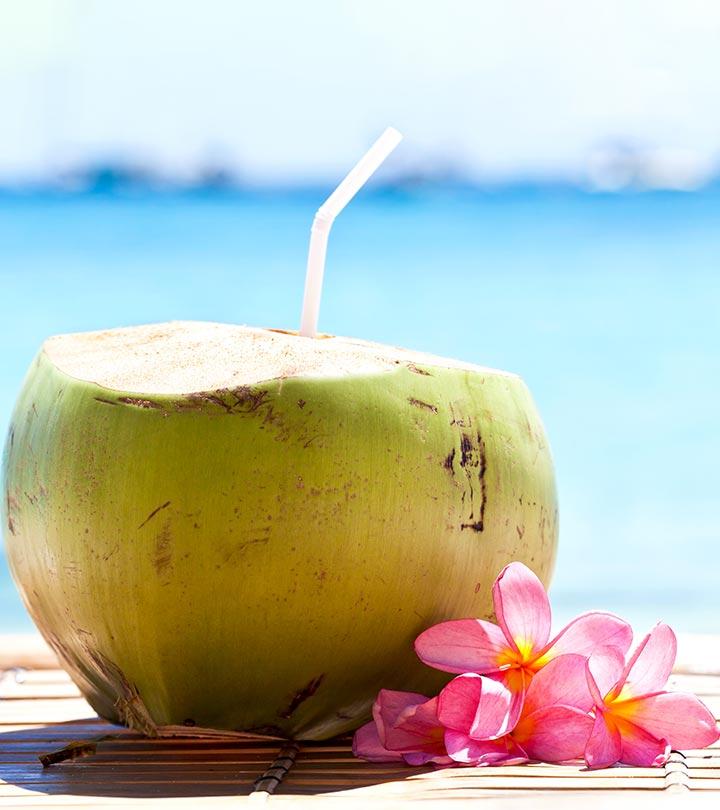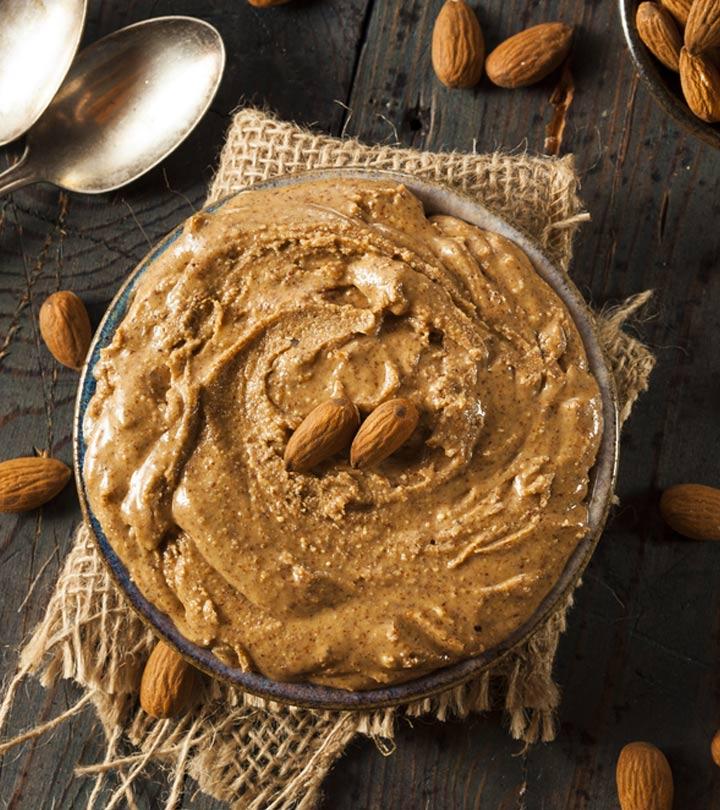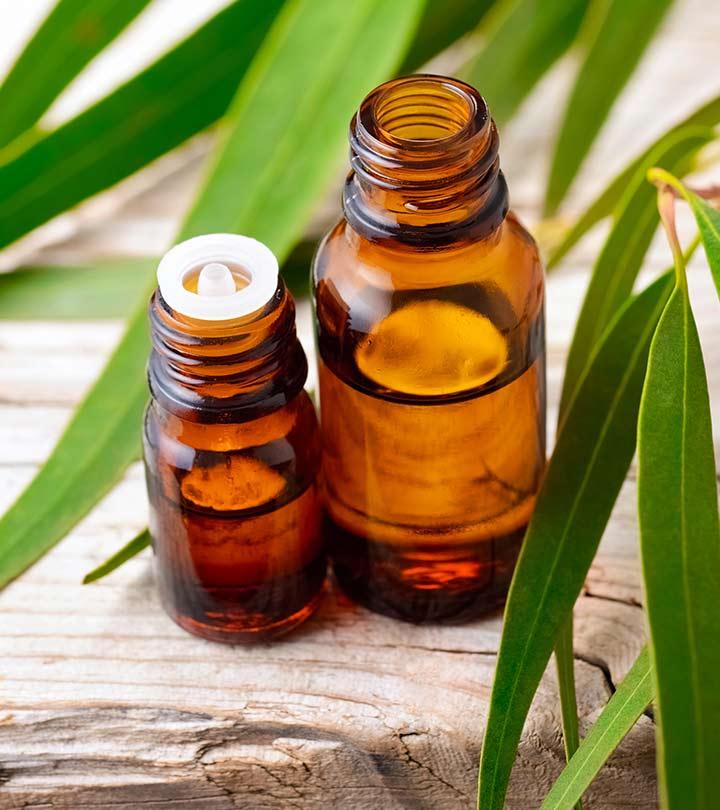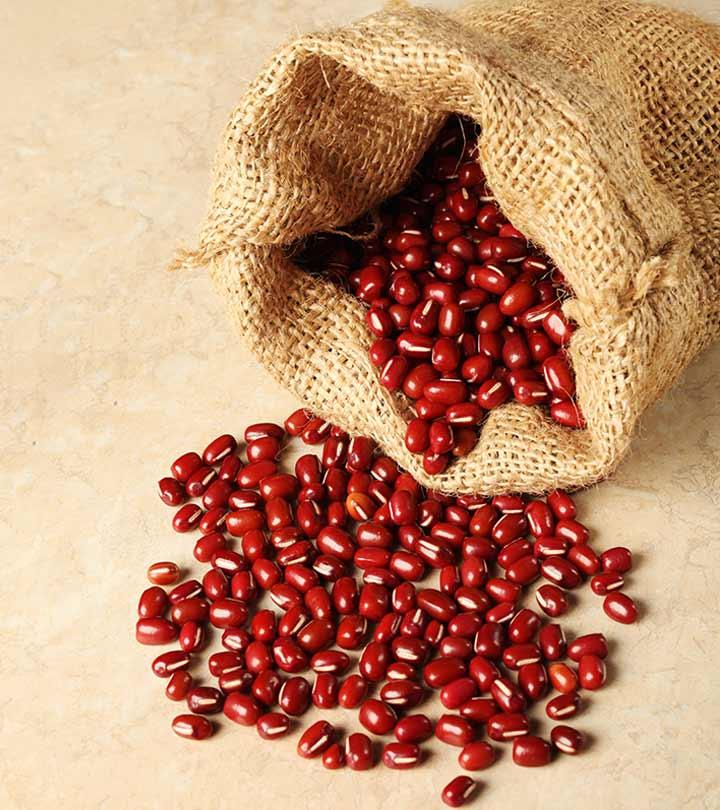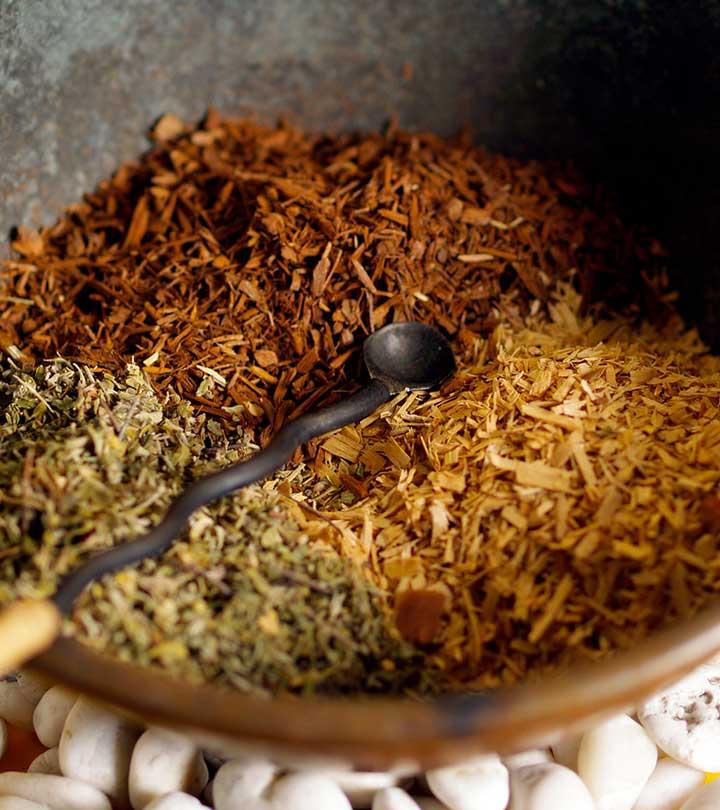7 Reasons Natto Is Super Healthy For You
Add a dash of nutrition and probiotics to your diet with fermented soybeans.

Image: Shutterstock
Natto benefits range from nourishing the gut to boosting the immune system. This traditional Japanese cuisine is considered an acquired taste as it has a slimy texture, strong flavor, and an unusual smell.
There are many other great reasons why you should serve this fermented soybean condiment with your meals. Natto is incredibly nutritious. It strengthens your bones and protects your heart. This article discusses the importance of natto, its benefits, nutritional profile, and possible side effects. Take a look.
 Know Your Ingredient: Natto
Know Your Ingredient: NattoWhat Is It?
A traditional Japanese dish of fermented soybeans.
What Are Its Benefits?
It improves digestion, bone health, immunity, heart and brain health, aids weight loss, and reduces cancer risk.
Who Can Consume It?
Anyone except people who are pregnant, have low blood pressure, or are on blood thinners.
How Often?
It can be consumed daily.
Caution
It may drastically lower blood pressure levels and act as a blood thinner.
In This Article
What Is Natto?
Natto is a common breakfast option in Japan. It is a result of combining soybeans with beneficial bacteria (Bacillus subtilis) and letting them ferment for extended periods.
 Trivia
TriviaNatto has a powerful smell and a strong, earthy flavor. Its sticky and slimy texture is unique to it. Each batch of natto produced may taste slightly different due to the minor differences in the fermentation process. But overall, natto food can help you in several ways. The following section explains the way to consume it. Check it out.
How To Eat Natto
- Open the natto package. Use chopsticks to vigorously stir the natto, creating its characteristic sticky texture. This enhances the flavor and ensures its smooth consistency.
- Add soy sauce for added taste. If you prefer an extra pungent taste, you may add mustard sauce.
- Garnish it with chopped green onions or pickled ginger on top.
- Natto is traditionally served with rice, but it can also be enjoyed on its own or with other side dishes.
- Since natto is stored in the refrigerator, you may consume it once it reaches room temperature.
- However, you may also consume a slightly warm natto. Microwave it for 10-20 seconds. Then stir it to redistribute the heat before consumption.
Natto can offer an array of health benefits. Know them in detail from the section below.
How Does Natto Benefit You?

The probiotics in natto contribute to most of its benefits. These primarily enhance digestion and boost immunity. Natto is also rich in vitamin K2, an important nutrient for bone strength. It can also offer protection against cancer.
1. Enhances Digestion
Natto is replete with probiotics that boost your gut health. Studies show that having the right kind of bacteria in your gut can promote digestion and treat associated disorders (1).
Bacillus subtilis, the beneficial bacteria natto is fermented with, can treat colon mucosal inflammation and the related inflammatory bowel disease (2).
One concern with soybeans is their antinutrient content. Antinutrients are compounds that block the absorption of certain nutrients and impair digestion. Studies show that fermentation of foods (as how it happens with natto) can reduce the levels of antinutrients (3).
Consumption of enough probiotics also helps treat other issues related to digestion, like diarrhea (4).
2. Boosts Bone Health
Studies conducted on premenopausal women show that intake of natto can boost bone formation (5). Natto contains high levels of vitamin K2, a nutrient associated with improved bone turnover and bone stiffness.
Similar findings were observed in studies conducted on postmenopausal women. Menaquinone-7 in natto can boost bone mineral density and prevent the development of osteoporosisi XA condition where the bones weaken as their mineral density decreases, increasing the risk of fractures. (6). Menaquinone-7 is another name for vitamin K2 (7).
3. Enhances Immunity
Studies conducted on elderly subjects show that Bacillus subtilis (the probiotic strain in natto) could stimulate the immune system and protect them from disease (8).
Similar effects were observed in studies done on calves (9).
The Bacillus subtilis in natto were also found to promote the functioning of macrophagesi XA kind of white blood cell that detect and destroy any foreign substance entering the body. , which are white blood cells that are an important part of the human immune system (10).
4. Promotes Heart Health
The probiotics in natto have a role to play here. Studies show that probiotics can help lower cholesterol levels – cutting down the risk of heart disease (11).
Natto also contains nattokinase, a compound concentrated in its sticky and stringy portions. Nattokinase has been found to reduce blood clots, thereby preventing cardiovascular disease (12).
Nattokinase also has anti-coagulanti XChemicals (also called blood thinners) in the form of medicines that prevent the development of blood clots , anti-atherosclerotic, and neuroprotective effects – all of which contribute to heart health (13). Nattokinase has been identified as one of the rare compounds with pharmacological effects that even most drugs don’t possess.
In another study, natto extracts were also found to have anti-hypertensivei XThe property of a substance or medicine to regulate high blood pressure, thus minimizing the risk of heart and kidney issues. effects (14). The vitamin K2 in natto also keeps calcium deposits from accumulating in the arteries (15).
Several Japanese studies also found that natto consumption was inversely associated with cardiovascular disease (16).
5. May Cut Cancer Risk
The soy content and vitamin K2 in natto have been linked to potential cancer prevention properties. Soy isoflavonesi XCompounds produced by plants (mostly found in the bean family), which emulate the estrogen hormone. were found to cut the risk of gastrointestinal, prostate, and breast cancers (17), (18), (19). Vitamin K2 was linked to a reduced risk of liver cancer (20).
In another Japanese study, natto was found to have anticarcinogenici XA chemical substance that works to delay the progress and development of cancer. effects (21).
Another report states that soy can help reduce the risk of death from stomach cancer (22). This can be attributed to the isoflavones in soy, which are particularly higher in fermented soy products – like natto.
6. May Aid Weight Loss
The probiotics in natto may contribute to weight loss. Studies show that probiotic supplementation can prevent an increase in fat mass and body mass (23).
Probiotic intake can also alter the composition of gut microbes. This improves energy metabolism, which may also aid weight loss (24).
7. Can Improve Brain Health
Several animal studies state the neuroprotective effects of fermented soybean products, like natto (25). Fermented foods enhance gut microbiota, which has a direct impact on cognitive functioning.
As we saw already, the nattokinase in natto can boost heart health. Studies show that cardiovascular health is closely linked to brain health (13).
Cuni Shimizu, a blogger, embarked on a 30-day journey of consuming natto. The experience led to remarkable changes in his body and well-being. He says, “In conclusion, it is super tasty, and I am healthier, my mind is clear, and even my skin is in better condition (i)”. He also shares that it helped him lose weight, regulate bowel movements, and reduce acne, dryness and inflammation.
Natto is a power food. In addition to the above-mentioned constituents, natto has other important nutrients we must be aware of.
What Is The Nutritional Profile Of Natto?
| Calorie Information | ||
|---|---|---|
| Amounts Per Selected Serving | %DV | |
| Calories | 371(1553 kJ) | 19% |
| From Carbohydrate | 102(427 kJ) | |
| From Fat | 161(674 kJ) | |
| From Protein | 108(452 kJ) | |
| From Alcohol | 0.0(0.0 kJ) | |
| Carbohydrates | ||
| Amounts Per Selected Serving | %DV | |
| Total Carbohydrate | 25.1g | 8% |
| Dietary Fiber | 9.4 g | 38% |
| Starch | ~ | |
| Sugars | 8.6 g | |
| Fats & Fatty Acids | ||
| Amounts Per Selected Serving | %DV | |
| Total Fat | 19.3 g | 30% |
| Saturated Fat | 2.8 g | 14% |
| Monounsaturated Fat | 4.3 g | |
| Polyunsaturated Fat | 10.9 g | |
| Total trans fatty acids | ~ | |
| Total trans-monoenoic fatty acids | ~ | |
| Total trans-polyenoic fatty acids | ~ | |
| Total Omega-3 fatty acids | 1284 mg | |
| Total Omega-6 fatty acids | 9583 mg | |
| Protein & Amino Acids | ||
| Amounts Per Selected Serving | %DV | |
| Protein | 31.0 g | 62% |
| Vitamins | ||
| Amounts Per Selected Serving | %DV | |
| Vitamin A | 0.0IU | 0% |
| Vitamin C | 22.8mg | 38% |
| Vitamin D | ~ | ~ |
| Vitamin E (Alpha Tocopherol) | 0.0 mg | 0% |
| Vitamin K | 40.4 mcg | 51% |
| Thiamin | 0.3 mg | 19% |
| Riboflavin | 0.3 mg | 20% |
| Niacin | 0.0 mg | 0% |
| Vitamin B6 | 0.2 mg | 11% |
| Folate | 14.0 mcg | 4 |
| Vitamin B12 | 0.0 mcg | 0% |
| Pantothenic Acid | 0.4 mg | 4% |
| Choline | 99.8 mg | |
| Betaine | ~ | |
| Minerals | ||
| Amounts Per Selected Serving | %DV | |
| Calcium | 380 mg | 38% |
| Iron | 15.1 mg | 84% |
| Magnesium | 201 mg | 50% |
| Phosphorus | 305 mg | 30% |
| Potassium | 1276 mg | 36% |
| Sodium | 12.3 mg | 1% |
| Zinc | 5.3 mg | 35% |
| Copper | 1.2 mg | 58% |
| Manganese | 2.7 mg | 134% |
| Selenium | 15.4 mcg | 22% |
| Fluoride | ~ | |
One cup of natto (175 grams) contains 371 calories and 9.4 grams of dietary fiber. It also contains:
- 31 grams of protein (62% of the daily value)
- 40.4 micrograms of vitamin K (51% of the DV)
- 22.8 milligrams of vitamin C (38% of the DV)
- 2.7 milligrams of manganese (134% of the DV)
- 15.1 milligrams of iron (84% of the DV)
- 380 milligrams of calcium (38% of the DV)
- 201 milligrams of magnesium (50% of the DV)
No wonder natto is so popular in Japan, given its impressive nutritional profile. This takes us to a question – how do you get your hands on natto?
How To Make Natto At Home
You can find natto in most Asian supermarkets. But you can also make it at home. Here’s how:
What You Need
- Water
- 1.5 pounds of soybeans
- Store-bought natto, one pack
- A large cooking pot
- A kitchen thermometer
- A sterilized and oven-safe dish, with a lid
- A pressure cooker, optional
Directions
- Wash the soybeans thoroughly under running water and place them in a pot.
- Pour the fresh water over the soybeans until they are fully submerged. Allow them to soak overnight (9 to 12 hours). You need to use three parts of water for one part of soybeans.
- Drain the beans the next morning and add fresh water again. Boil for about 9 hours.
- Now, drain the cooked beans and place them in the sterilized, oven-safe dish.
- Mix the store-bought natto with the boiled beans.
- Using a sterilized spoon, stir everything.
- Cover the dish and place it in an oven. Let it ferment for 22 to 24 hours at 100o F.
- Let the natto cool. Store it in your refrigerator for 24 more hours.
- Enjoy!
You can store the leftovers in the freezer for later use. You can eat natto as it is or enjoy it with steamed rice. Natto also works great in miso soup, pasta dishes, and even sushi.
 Quick Tip
Quick TipYou can also add soy sauce, chives, dried bonito, raw egg, seaweed, pepper, or tuna to your natto to enhance its flavor.
Preparing natto requires some patience, and so does eating it! On that note, there are other fermented soy products like tempeh and miso. Can you consume them as well?
How Is Natto Different From Tempeh/Miso/GMO Soy?
Natto can be made with other beans too (kidney or black beans). But the beneficial bacteria thrive best on soybeans, which contributes to more efficient production of nattokinase.
Other soy products like tempeh or miso also are quite healthy – as they are made of fermented soybeans. Unfermented soy products may contain harmful compounds (phytates, trypsin inhibitors, goitrogens, phytoestrogens, and aluminum) that could be dangerous to health (26).
Talking about GMO soy, more than 90% of the soybeans we get in the US market are genetically modified. The safety of GMO foods, in general, is still under scrutiny. Research is still being done, and conclusions are yet to be formed.
Hence, we suggest you stick to the fermented versions when consuming soy. Not only are they higher in beneficial bacteria, but they also are quite low in antinutrients.
Of course, all fermented soy products offer great benefits. But it is natto alone that contains natto kinase – so you can eat more of it.
Or can you? Natto is great for most people. But some individuals are required to exercise caution.
What Are The Side Effects Of Natto?
• Issues During Pregnancy And Breastfeeding
There is not enough information on the safety of natto during pregnancy and breastfeeding. Stay safe and avoid use.
• Bleeding Disorders
The nattokinase in natto may act as a blood thinner and aggravate bleeding disorders. Not all studies agree with this, though (27). But you should talk to a doctor.
Also, avoid taking natto at least two weeks before a scheduled surgery. This is to reduce the chances of excessive bleeding during or after surgery.
• Low Blood Pressure
Nattokinase may lower blood pressure levels (28). If your blood pressure is already low, this might be a problem.
Infographic: 5 Important Health Benefits Of Natto
Natto is a highly nutritious and fermented dish that is known for boosting the immune system. Despite its strong flavor, slimy texture, and unusual smell, natto provides several health benefits in the long run. Check out the infographic to learn about the 5 reasons why you should include natto in your diet. Scroll down to know more! Illustration: StyleCraze Design Team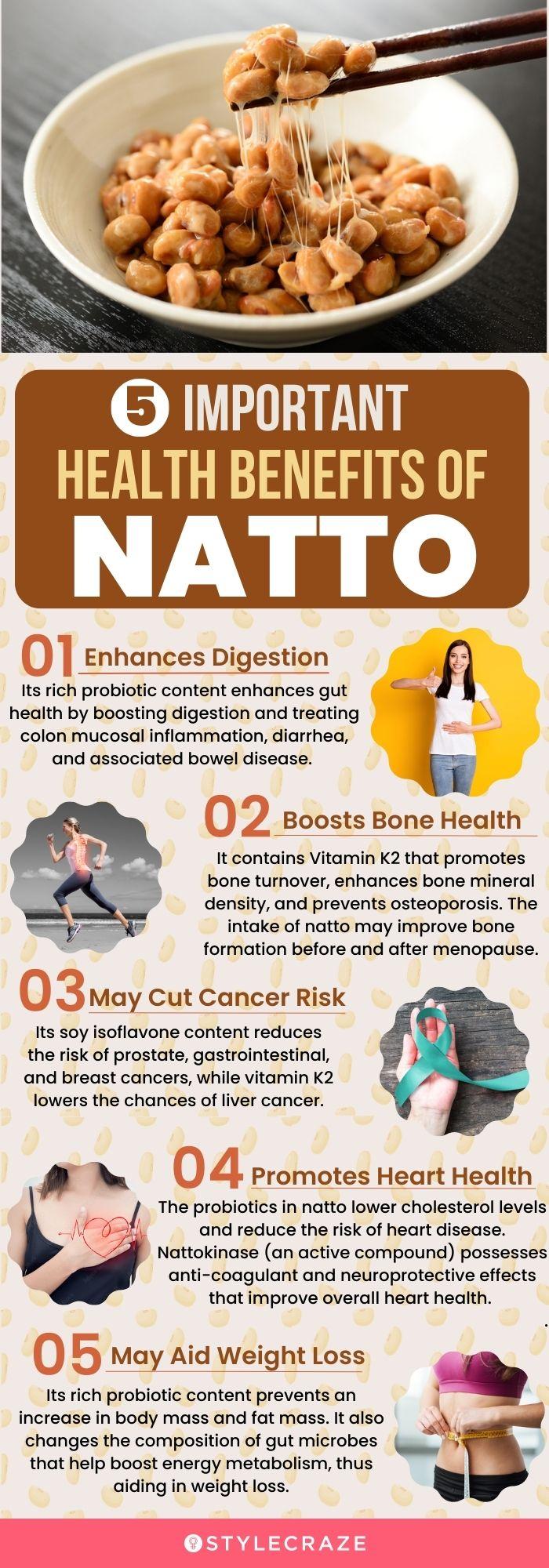
Natto is a traditional Japanese food with a strong earthy flavor and sticky texture. The probiotics and essential nutrients in natto benefit your health in many ways. Natto may enhance digestion, improve bone health, boost immune system function, and promote heart health. However, the nattokinase it contains may cause hypotension and bleeding disorders in some people. In addition, avoid taking natto during pregnancy and breastfeeding as its safety in this regard is yet to be studied. Consume natto in moderation to reap its maximum benefits.
Frequently Asked Questions
Is it okay to eat natto everyday?
Yes, it is okay to eat natto everyday. However, natto should be consumed in moderate quantities to avoid side effects such as weight gain, cardiovascular issues and issues with blood clotting.
What is the best time to eat natto?
Opinion is divided with regards to the best time to eat natto. Traditionally, it is served as part of a breakfast meal. When consumed in the morning, it can increase your metabolism and give you energy for going through the day. When consumed at night, its blood pressure lowering effects are less likely to cause problems and it may facilitate the breakdown of blood clots in the body (29), (30).
Is natto anti-aging?
Yes, research shows that natto exhibits anti-aging effects on the cells of the body (31). According to one more research, natto is rich in anti-inflammatory compounds and antioxidants, and can potentially improve skin health (32). However, more human studies are warranted in this regard.
Does natto increase estrogen?
Natto contains phytoestrogens, which mimic the action of estrogen, and may cause an apparent increase of estrogen in the body (33), (34).
Does natto make you gassy?
Being a fermented food, natto generally does not cause gas and bloating. However, overconsumption of natto may cause gastrointestinal discomfort.
Key Takeaways
- Natto is a traditional Japanese food rich in vitamins, iron, calcium, and nattokinase.
- It may reduce cardiovascular diseases as its probiotics are considered to lower cholesterol.
- It may promote healthy bones as it is rich in Vitamin K2
- The probiotics in natto may improve metabolism and enhance immunity.
- It may improve brain function.
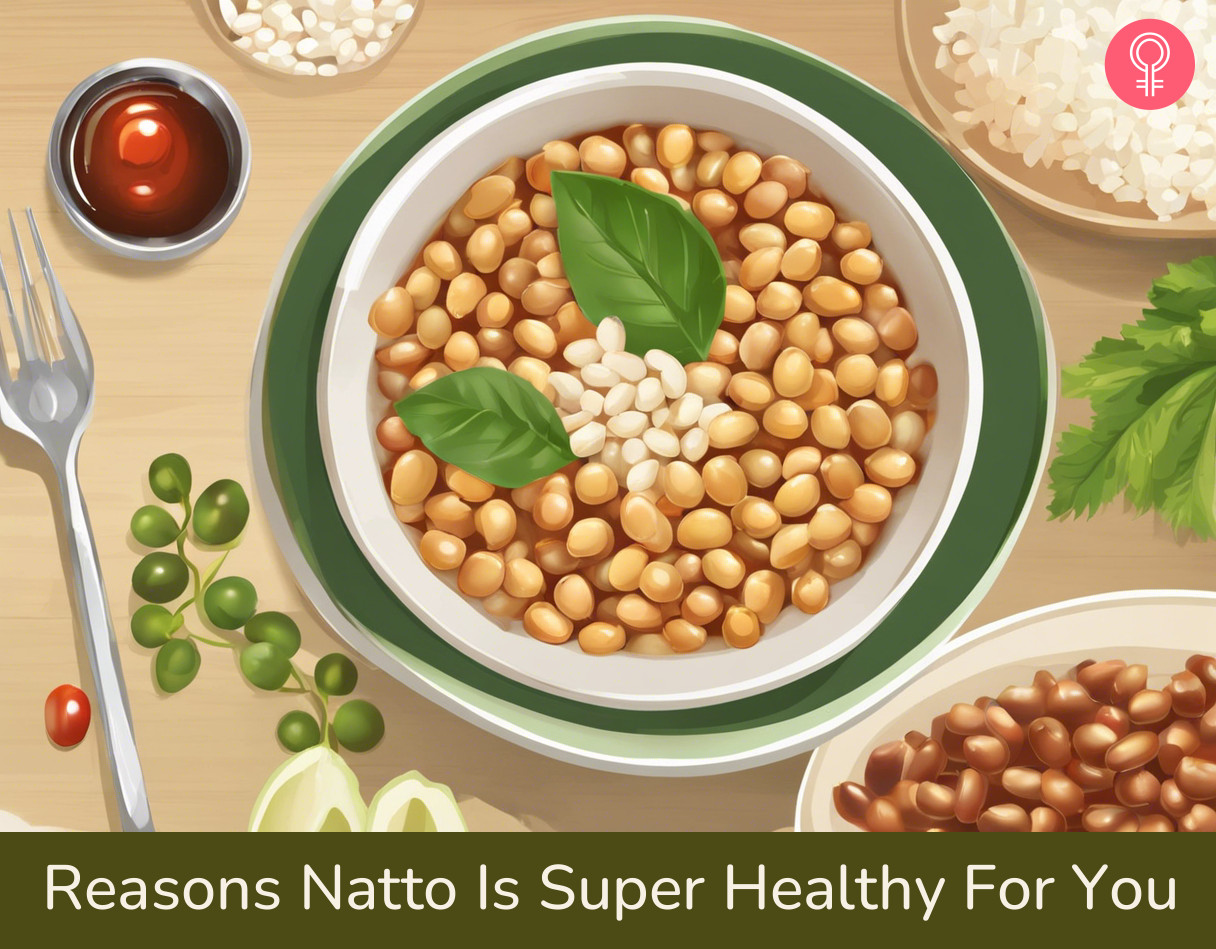
Image: Stable Diffusion/StyleCraze Design Team
Discover the top 5 health benefits of natto, the longevity secret of the Japanese! Learn how this traditional food can help improve your health and well-being by watching the video below. Check it out now!
Personal Experience: Source
StyleCraze's articles are interwoven with authentic personal narratives that provide depth and resonance to our content. Below are the sources of the personal accounts referenced in this article.
i.I’ve eaten “natto” (Japanese fermented soybeans) for 30 days in a row, and this is what happened in my body.https://medium.com/@CuniShimizu/ive-eaten-natto-japanese-fermented-soybeans-for-30-days-in-a-role-and-this-is-what-happened-2c55b269bf11
References
Articles on StyleCraze are backed by verified information from peer-reviewed and academic research papers, reputed organizations, research institutions, and medical associations to ensure accuracy and relevance. Read our editorial policy to learn more.
- “The gut microbiota and inflammatory…” The Journal of Allergy and Clinical Immunology, US National Library of Medicine.
- “Effect of bacillus subtilis…” Indian Journal of Biochemistry & Biophysics, US National Library of Medicine.
- “Reduction in antinutritional and toxic components…” Food Research International, ScienceDirect.
- “Probiotics for the prevention and treatment of…” JAMA, US National Library of Medicine.
- “Promotion of bone formation by…” Journal of Nutritional Science and Vitaminology, US National Library of Medicine.
- “Intake of fermented soybeans, natto, is associated…” The Journal of Nutrition, Oxford Academic.
- “Menaquinone-7” Open Chemistry Database, US National Library of Medicine.
- “Probiotic strain Bacillus subtilis…” Immunity & Ageing, US National Library of Medicine.
- “Effects of bacillus subtilis natto on performance…” Journal of Dairy Science.
- “Immunomodulatory effects of bacillus subtilis…” Microbiology and Immunology, Wiley Online Library.
- “Cholesterol-lowering probiotics as potential…” Experimental Diabetes Research, US National Library of Medicine.
- “A single-dose of oral nattokinase potentiates…” Scientific Reports, US National Library of Medicine.
- “Nattokinase: a promising alternative in prevention…” Biomarker Insights, US National Library of Medicine.
- “Anti-hypertensive substances in fermented…” Plant Foods for Human Nutrition, US National Library of Medicine.
- “Vitamin K dependent proteins and the role of…” Oman Medical Journal, US National Library of Medicine.
- “Dietary soy and natto intake and cardiovascular…” The American Journal of Clinical Nutrition.
- “Soy and isoflavone consumption and risk of…” European Journal of Nutrition, US National Library of Medicine.
- “Isoflavones and prostate cancer…” Chinese Medical Journal, US National Library of Medicine.
- “Soy and its isoflavones…” Anticancer Agents in Medicinal Chemistry, US National Library of Medicine.
- “Effect of menatetrenone, a vitamin K2 analog…” International Journal of Cancer Research and Treatment.
- “Re: soy, isoflavones , and…” Journal of the National Cancer Institute.
- “A prospective cohort study of soy product…” British Journal of Cancer, US National Library of Medicine.
- “Probiotic supplementation attenuates increases…” Obesity, US National Library of Medicine.
- “Lactobacillus fermentum and…” Journal of Functional Foods, ScienceDirect.
- “A review of fermented foods with beneficial…” Preventive Nutrition and Food Science, US National Library of Medicine.
- “Role of fermentation in improving…” Asian-Australasian Journal of Animal Sciences, US National Library of Medicine.
- “Nattokinase: a promising alternative in prevention…” Biomarker Insights, US National Library of Medicine.
- “Effects of nattokinase on blood pressure…” Hypertension Research, US National Library of Medicine.
- “Consumption of nattokinase is associated with reduced blood pressure and von Willebrand factor, a cardiovascular risk marker: results from a randomized, double-blind, placebo-controlled, multicenter North American clinical trial…” Integrated Blood Pressure Control, US National Library of Medicine.
- “Nattokinase: An Oral Antithrombotic Agent for the Prevention of Cardiovascular Disease…” International Journal Of Molecular Sciences, US National Library of Medicine.
- “Fermented Soy Products and Their Potential Health Benefits: A Review” Microorganisms.
- “Natto (fermented soybean) extract extends the adult lifespan of Caenorhabditis elegans…” Biosci Biotechnol Biochem, US National Library of Medicine.
- “The pros and cons of phytoestrogens…” Front Neuroendocrinol, US National Library of Medicine.
- “Soy and Health Update: Evaluation of the Clinical and Epidemiologic Literature…” International Journal Of Molecular Sciences, US National Library of Medicine.





